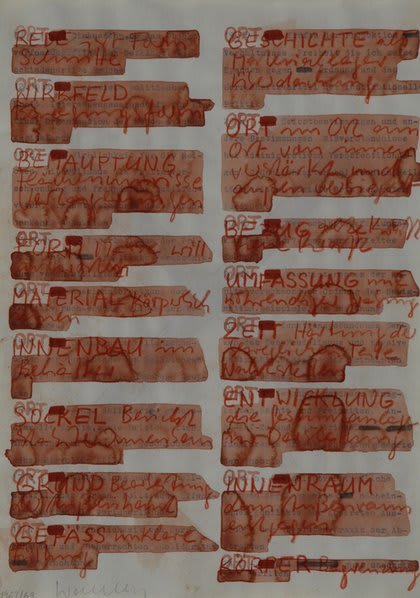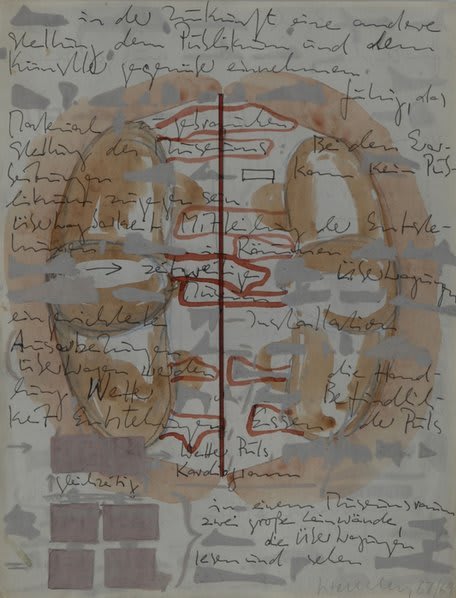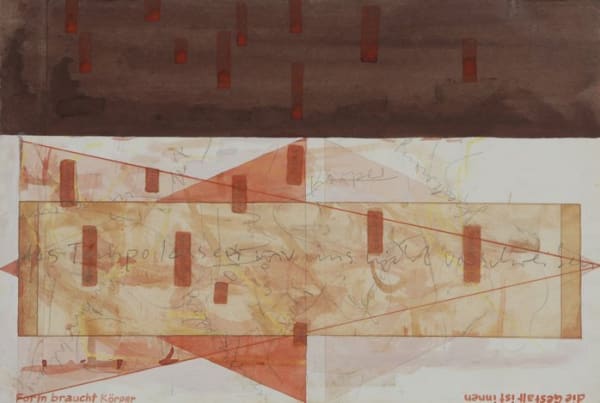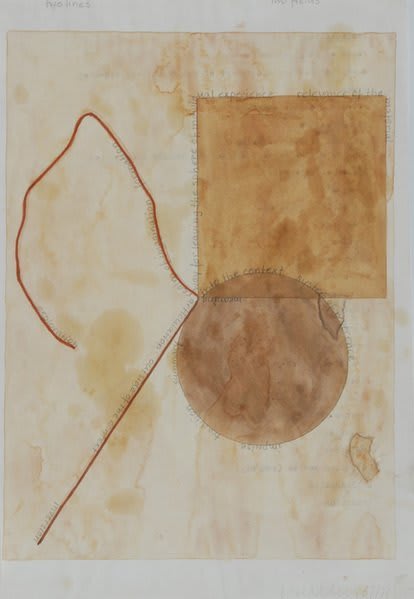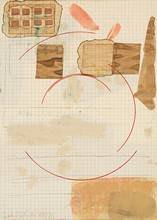FRANZ ERHARD WALTHER: Drawings from the 1960s
Richard Saltoun and Karsten Schubert are pleased to announce this exhibition of Franz Erhard WALTHER's drawings from the 1960s.
Walther, a contemporary of artists like Blinky Palermo and Gerhard Richter, has remained relatively unknown outside continental Europe. A solo exhibtion of his work at the Drawing Room, his first show in the UK, reinvorated interest in the artist and his groundbreaking experiments with form, medium and process.
This exhibition is a unique opportunity to view his seminal works from the 1960s, in which he saw uninhibited action as integral to his artistic practice and process. All of the exhibited works are on paper, specifically industrial paper manufactured for everyday use, a medium which he saw as being process-orientated as it is intended to be used for everything but drawing or painting.
-
 Franz Erhard WALTHER, Diptych
Franz Erhard WALTHER, Diptych -
 Franz Erhard WALTHER, Werkzeichnung (Mit Moritz und Lehman), 1969
Franz Erhard WALTHER, Werkzeichnung (Mit Moritz und Lehman), 1969 -
 Franz Erhard WALTHER, Untitled, 1967/69
Franz Erhard WALTHER, Untitled, 1967/69 -
 Franz Erhard WALTHER, Recto/Verso: Untitled, 1967/69
Franz Erhard WALTHER, Recto/Verso: Untitled, 1967/69 -
 Franz Erhard WALTHER, Recto/Verso: Untitled, 1969/73
Franz Erhard WALTHER, Recto/Verso: Untitled, 1969/73 -
 Franz Erhard WALTHER, Die Gestalt ist innen - Form braucht Körper, 1969/74
Franz Erhard WALTHER, Die Gestalt ist innen - Form braucht Körper, 1969/74 -
 Franz Erhard WALTHER, Two lines, two fields, 1969/71
Franz Erhard WALTHER, Two lines, two fields, 1969/71 -
 Franz Erhard WALTHER, Werkzeichnung (Blind), 1966
Franz Erhard WALTHER, Werkzeichnung (Blind), 1966 -
 Franz Erhard WALTHER, Werkzeichnung (Abbruchzeichen), 1969-71
Franz Erhard WALTHER, Werkzeichnung (Abbruchzeichen), 1969-71 -
 Franz Erhard WALTHER, Werkzeichnung (Blind), 1971
Franz Erhard WALTHER, Werkzeichnung (Blind), 1971 -
 Franz Erhard WALTHER, Die Ummantelung schwindet, der Körper nimmt die Form auf, 1986
Franz Erhard WALTHER, Die Ummantelung schwindet, der Körper nimmt die Form auf, 1986
Richard Saltoun and Karsten Schubert are pleased to announce this exhibition of Franz Erhard WALTHER's drawings from the 1960s.
Walther, a contemporary of artists like Blinky Palermo and Gerhard Richter, has remained relatively unknown outside continental Europe. A solo exhibtion of his work at the Drawing Room, his first show in the UK, reinvorated interest in the artist and his groundbreaking experiments with form, medium and process.
This exhibition is a unique opportunity to view his seminal works from the 1960s, in which he saw uninhibited action as integral to his artistic practice and process. All of the exhibited works are on paper, specifically industrial paper manufactured for everyday use, a medium which he saw as being process-orientated as it is intended to be used for everything but drawing or painting. The physical alteration of the paper's material form through the addition of paint or water lends it an informal, objective quality uncontrollable by the artist's hand.
The line is a paramount motif running through these works, as Walther was interested in its ability to dictate and delineate space. Untitled, a 1969-71 piece on lined graph paper, utilises the systematic grid of the paper as a backdrop that he disrupts with loosely painted gouache and watercolour squares, semi-circular lines, and faintly drawn text. The effect is one of movement and uncertainty as Walther alludes simultaneously to order and chaos and, as with much of Walther's work, the audience is invited to participate with the work - through on a visual rather than physical level.
His work is considered to be a precursor to relational aesthetics with its emphasis on the social, interactive elements of art, rather than the actual art object.
Walther has received renewed critical attention with shows at the Dia Art Foundation, NYC, Museum Haus Lange, Krefeld, and his participation at the 2012 Sao Paulo Biennale. He has previously had major exhibitions at the Museum of Modern Art, New York, FRAC Bretagne, Secession, Vienna, and participated in four Documentas (Documenta 5 in 1972, Documenta 6 in 1977, Documenta 7 in 1982, and Documenta 8 in 1987). His work is included in the collections of several major museums and institutions including: Hamburger Kunsthalle, Kunstmuseum Bonn, Staatsgalerie Stuttgart, Mercedes-Benz Museum, Struttgart, Dia Art Foundation, NYC, and Mamco, Musee d'art moderne et contemporain, Geneva.



